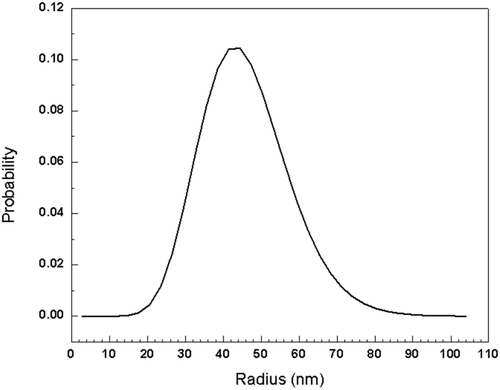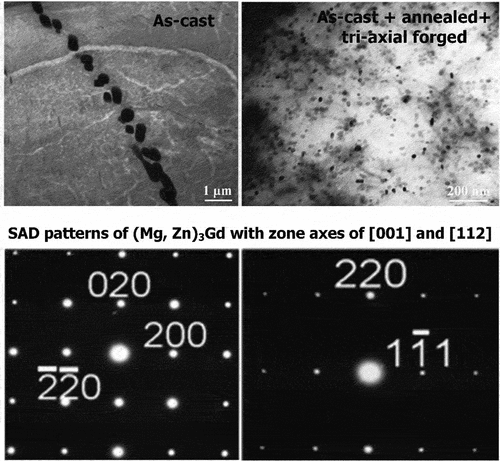Figures & data
Table 1. X-ray diffraction 2ϴ values for pure Mg compared to as-cast and as-cast + annealed + triaxial forged alloy indicating peaks corresponding to Mg matrix and W-phase precipitates.
Figure 1. X-ray diffraction plot for the as-cast Mg-2Zn-2Gd alloy showing diffraction peaks corresponding to the Mg matrix and W-precipitates.
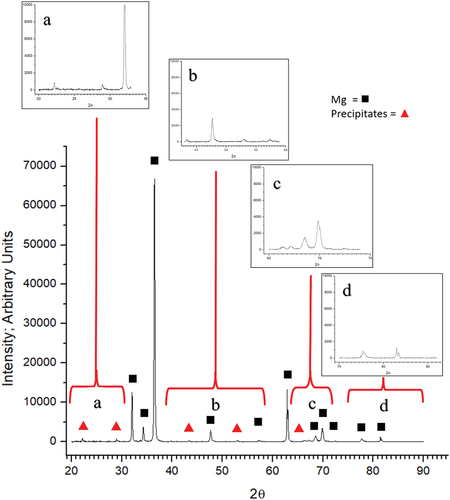
Figure 2. X-ray diffraction plot for the as-cast + annealed + triaxial forged Mg-2Zn-2Gd alloy showing diffraction peaks corresponding to the Mg matrix and W-precipitates.
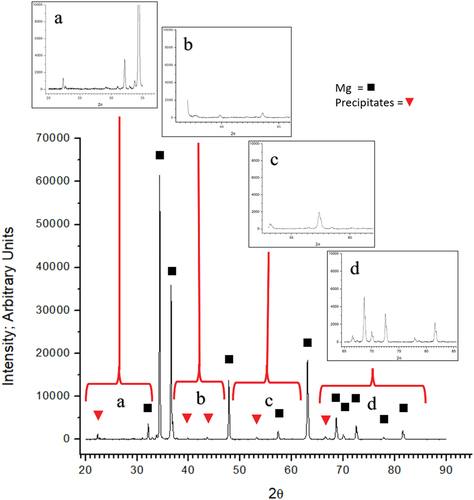
Figure 3. Two-dimensional wide-angle X-ray scattering of forged vs unforged samples. (Top) Unforged samples exhibit specular reflections along with slight diffuse scattering from large oriented crystalline domains in the material. Position-dependent low-angle reflections due to material inhomogeneities also result in ‘streaking’ along certain azimuthal directions. (Bottom) The Debye–Scherrer rings in the forged samples appear more uniform, consistent with randomly oriented smaller domains compared to the unforged material.

Table 2. Average grain size and mechanical properties of as-cast, as-cast + annealed and as-cast + annealed + triaxial forged (2 passes) Mg-2Zn-2Gd alloy.
Figure 4. Small-angle X-ray scattering plots of as-cast and as-cast + annealed + triaxial forged Mg-2Zn-2Gd alloy.
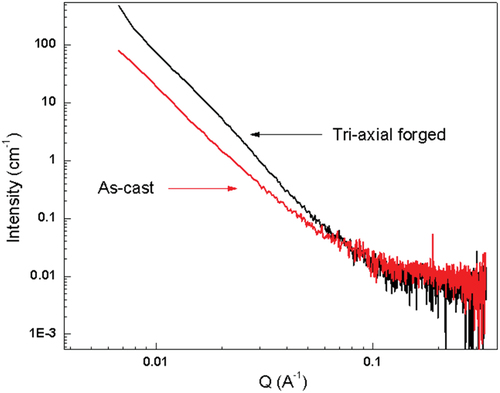
Figure 5. The as-cast sample has virtually no nanoparticle structure indicated by the absence of slope, while the as-cast + annealed + triaxial forged sample has more than 10× increase in the nanoprecipitate signal.


